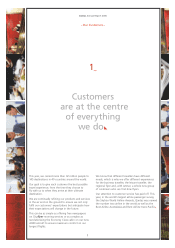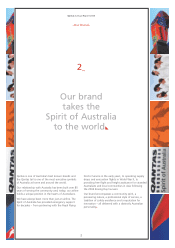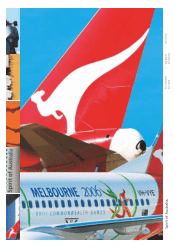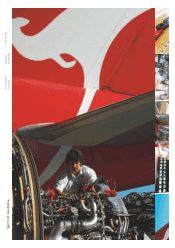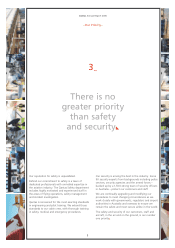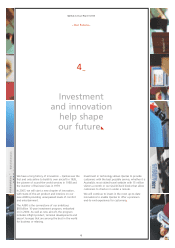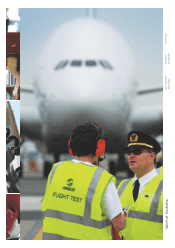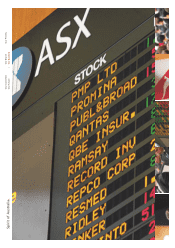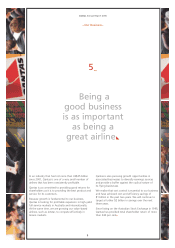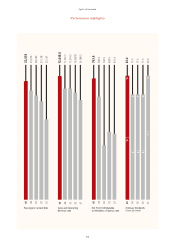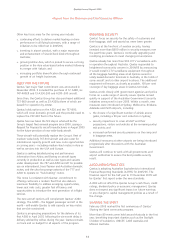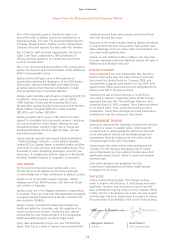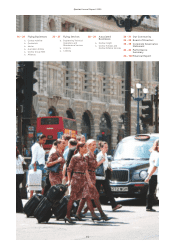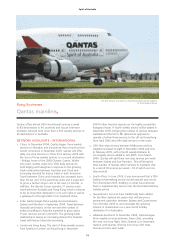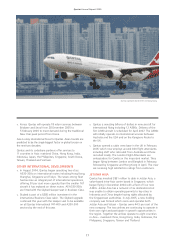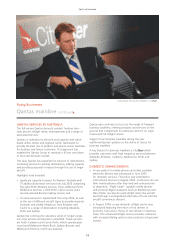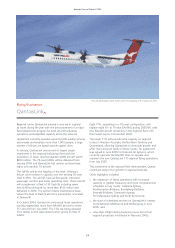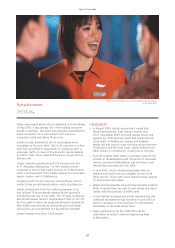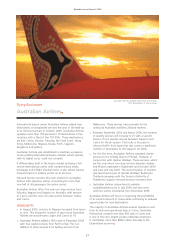Qantas 2005 Annual Report Download - page 13
Download and view the complete annual report
Please find page 13 of the 2005 Qantas annual report below. You can navigate through the pages in the report by either clicking on the pages listed below, or by using the keyword search tool below to find specific information within the annual report.
11
Margaret Jackson
Chairman
Geoff Dixon
Chief Executive Officer
In the decade since its privatisation, Qantas has delivered consistent
returns to shareholders, employed large numbers of Australians
and provided international and domestic aviation services that are
regarded as being among the world’s best.
Qantas celebrated an important milestone on 31 July 2005
– the 10th anniversary of its listing on the Australian Stock
Exchange.
As well as dealing with the huge cultural, financial and
operational changes associated with the transition from a
government-owned company to a fully-privatised business,
Qantas has weathered one of the most turbulent periods
in aviation, particularly in the past five years.
Since privatisation, Qantas has grown revenue by 77 per
cent and provided total shareholder return of more than
340 per cent.
Over the past 10 years, Qantas has also:
x grown staff numbers by almost 30 per cent from
30,000 in 1995 to more than 38,000 today;
x more than doubled the number of passengers carried
each year, from 16 million in 1995 to more than
32 million in 2005;
x increased the number of flights it operates from
1,900 services a week (including 250 international
services) to more than 5,000 a week (including 600
international services);
x expanded its network significantly from 86
destinations in 24 countries, including 48 in Australia,
to 145 destinations in 40 countries, including 62 in
Australia; and
x grown its fleet by 47 per cent, from 136 aircraft to 200.
THIS YEAR’S RESULTS
In 2004/05, Qantas responded extremely well to ever-
increasing competition, rapidly escalating oil prices and a
heightened security environment to achieve a record profit.
Qantas reported a profit before tax of $1,027.2 million for
2004/05, a 6.5 per cent increase on last year’s result of
$964.6 million. Net profit after tax was $763.6 million, up
17.8 per cent from last year. Revenue for the year totalled
$12.6 billion, an increase of $1,295 million or 11.4 per cent.
The Directors declared a fully franked final dividend of
10 cents per share. Dividends for the full year total 20 cents
per share, three cents higher than last year.
The main drivers of Qantas’ record result included:
x the successful introduction of Jetstar, which provided
Qantas with strong competitive business models in all
sections of the domestic market – full-service,
value-based and regional;
x an improvement in yields, excluding the unfavourable
impact of foreign exchange rate movements, of
2.0 per cent;
x cost and efficiency savings of $545 million from the
Sustainable Future Program (SFP);
x a unit cost reduction, before the impact of unfavourable
fuel cost movements, of 5.8 per cent; and
x a continued investment in product and service.
This year, in an increasingly competitive market, Qantas has
achieved valuable recognition from customers, being voted
the number two airline in the world in the 2005 Skytrax
World Airline Awards. This is the world’s largest passenger
survey with 12.3 million respondents from 90 nationalities.
STRATEGIC IMPERATIVES
While Qantas has put many challenges behind it, new
challenges are appearing. In fact, Qantas expects these
challenges to grow, driven by three key factors that
To our fellow shareholders
Qantas Annual Report 2005
~Report from the Chairman and Chief Executive Officer~


